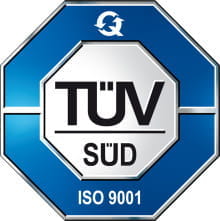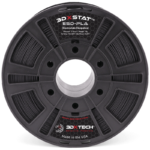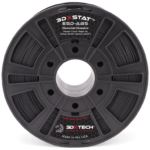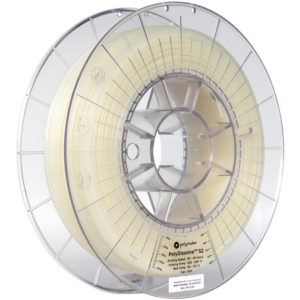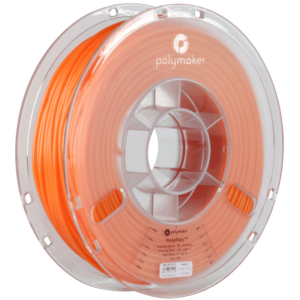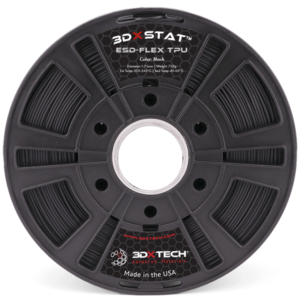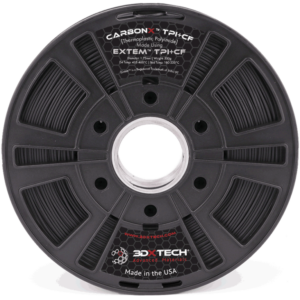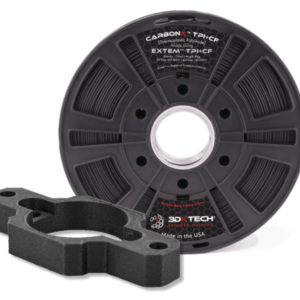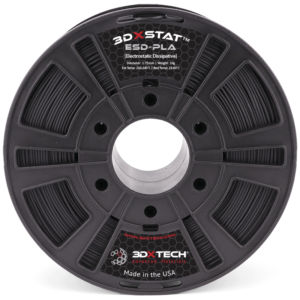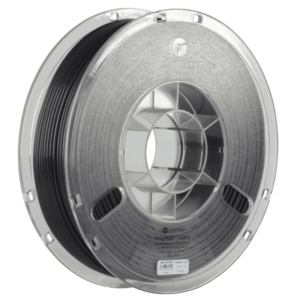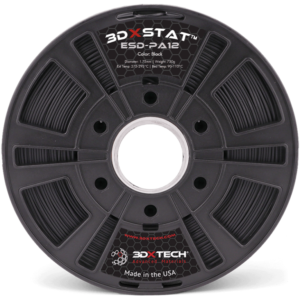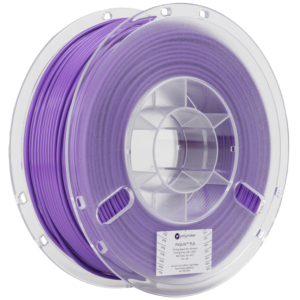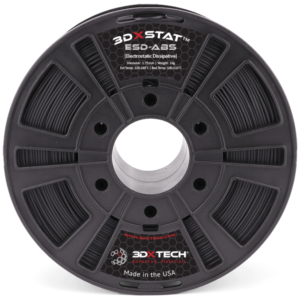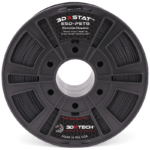
3DXSTAT ESD-PETG
0.75 kg = SGD 155.99
2kg = SGD 405.99
3DXSTAT™ ESD-PETG is an easy to use ESD-Safe filament formulated for a wide array of applications that require electrostatic discharge (ESD) protection and enhanced chemical resistance. Made using high flow PETG copolymer and CNT’s to offer exceptional repeatability and reliability.
- Description
Description
3DXSTAT™ ESD-PETG
3DXSTAT™ ESD-PETG is an advanced ESD-Safe compound designed for use in critical applications which require electrostatic discharge (ESD) protection. Made using cutting-edge multi-wall carbon nanotube technology, state of the art compounding technology, and precision extrusion processes. Target surface resistance: 10^7 to 10^9 Ohm. An alternative to Zortrax Z-ESD.
Print Recommendations

Extruder Temp
230-260°C

Bed Temp
60-90°C

Heated Chamber
Not required

Nozzle Specs
No special concerns

Bed Adhesion
Magigoo Bed Prep

Layer Height
No special concerns

Drying Specs
65°C for 4 hours

Supports
Works best with
X1 USM Water Soluble Support
Benefits of PETG Include:
- Superior chemical resistance vs. ABS
- Amorphous structure giving it low, near isotropic shrinkage
- Low moisture absorption, 3x lower than ABS
- Very low odor emitted while printing
- Superior ductility vs. ABS
- Wide processing range of 230-260°C
Benefits of 3DXSTAT™ Include:
- Consistent surface resistivity
- Improved retention of impact & elongation
- Low particulate contamination
- Minimal contribution to outgassing and ionic contamination
TECHNICAL DATA SHEET
Click to open this material’s TDS.
SAFETY DATA SHEET
Click to open this material’s SDS.
Chemical Resistance of PETG:
Unstressed tensile bars molded of PETG exhibit good resistance to dilute aqueous solutions of mineral acids, bases, salts, and soaps, and to aliphatic hydrocarbons, alcohols, and a variety of oils. Halogenated hydrocarbons, short chain length ketones, and aromatic hydrocarbons dissolve or swell the plastic.
Typical ESD-PETG Applications Include:
- Semi-con: HDD Components, Wafer Handling, Jigs, Casings, & Connectors
- Industrial: Conveying, Metering, and Sensing Applications
Target Conductivity for 3DXSTAT ESD-PETG:
- 10^7 to 10^9 ohm surface resistivity on 3DP sample using concentric ring test method.
- Note: Internal studies have indicated that increased extruder temperatures can achieve higher levels of conductivity. Likewise, lower extruder temperatures have resulted in lower levels of conductivity. Each printer is set-up differently as well as varied part geometry. Therefore, expect some trial time to understand how this filament works in your specific printer / application. However, please do not exceed 270°C to reduce the risk of polymer degradation.
Surface Conductivity as a Function of Extruder Temperature:
The surface resistance of the printed ESD-safe part will vary depending on the printer’s extruder temperature. For example, if your testing indicates the part is too insulative, then increasing the extruder temperature will result in improved conductivity. Therefore, the surface resistance can be ‘dialed-in’ by adjusting the extruder temperature up or down depending on the reading you receive on your part.

Filament Specifications:
1.75mm and 2.85mm +/- 0.05mm in diameter
Recommended Print Settings:
- Extruder: 230-260°C
- Bed Temp: 60-90°C
- Bed Prep: Magigoo Bed Prep Adhesive and 3DXTECH Polyimide Tape work best for us.
- Heated Chamber: Not required
- Supports: Water soluble AquaTek X1 USM works great for complex parts.
- Drying Instructions: 65°C for 4 hours.

